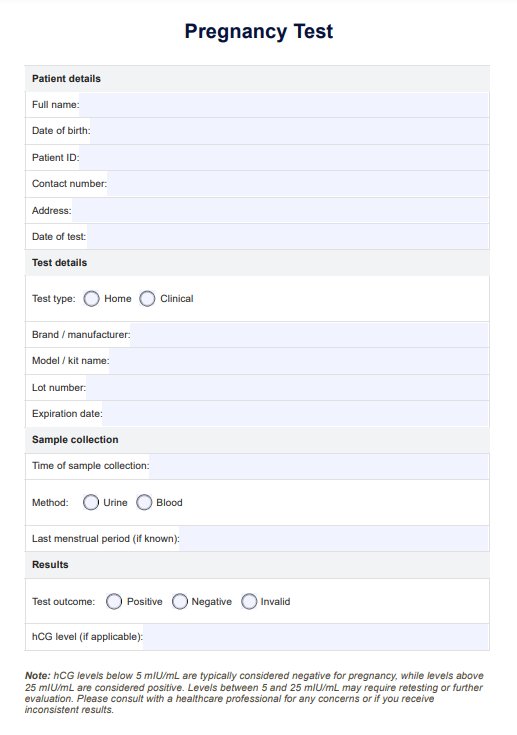Women suspecting pregnancy, gynecologists, or general practitioners typically use a Pregnancy Test.

Pregnancy Test
Discover the accuracy and ease of Carepatron's Pregnancy Test management platform: reliable results and a user-friendly interface for optimal healthcare.
Use Template
Pregnancy Test Template
Commonly asked questions
When symptoms of pregnancy are present or after unprotected intercourse.
These are used either as a home-based urine test or a clinical blood test.
EHR and practice management software
Get started for free
*No credit card required
Free
$0/usd
Unlimited clients
Telehealth
1GB of storage
Client portal text
Automated billing and online payments











